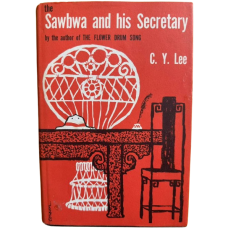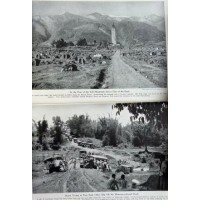In the summer of 1940, when C.Y.Lee was graduated from the Southeast Associated Univeristy (西南联大)in Kunming, he was offered a job in Mangshih(芒市), a Shan state on the China-Burma border, where, it ws rumored, the Shan girls were beautiful and trembling disease deadly.
Young and adventuous, Lee accepted the job, hitch-hiked to Mangshih on American lend-lease trucks running on the great Burma Road. He found, to his delight, that Mangshih was Utopia where flowers bloomed all year round, where the Shans were amiable and friendly, their girls indeed beautiful, and the so-called trembling disease nothing but ordinary malaria. Above all, he found his employer, the Sawbwa of Mangshih, was an esay-going and fun-loving man who ruled his state with proclamations and laughter.
Lee became the Sawbwa's first modern secretary. His job included writing English letters for Sawbwa, playing badminton with the Sawbwa's young Eurosian wife, and entertaining important people traveling on the Burma Road. He worked there happily until the Japanese invaded Burma and the border. For almost two and a half years he shared pleasures, happiness, sorrows and headaches with the Sawbwa.
The Sawbwa and His Secretar is a fascinating and personal account of a unique historical period and place, seen through the eyes of an outsider who becomes intimately involved in the affairs of the Sawbwa's court and the lives of the local inhabitants. It provides a rich description of life among the various tribespeople in the region, including the Kachin, Shan, and Lolo (now known as Yi).
In the National Geographic Magazine article "Burma Road, Back Door to China," published in November 1940, the writer G. E. Fane and photographer Frank Outram documented their journey along the Burma Road. Traveling just before the monsoon season, they described their experiences, including a stay at the Sawbwa's hotel in Mangshih and meetings with the amiable Sawbwa and his austere old Chinese secretary. This account suggests that their visit took place prior to the arrival of C.Y. Lee, the new secretary, as he is not mentioned in the article, and translating was helped by Mr. Yao, who was operating in connection with malarial research work.
1959, first printing, Farrar, Straus and Cudahy, New York. With a good dust jacket, flaps corners are clipped with price remains, in a good condition.
About the Author
C.Y. Lee (Chin Yang Lee, 黎锦扬, 1915-2018) was a Chinese-American author best known for his 1957 novel, The Flower Drum Song. This novel, about generational and cultural conflict among Chinese immigrants in San Francisco's Chinatown, became a New York Times bestseller and inspired the popular Rodgers and Hammerstein Broadway musical Flower Drum Song. The musical, which opened in 1958, was the first Broadway show to feature Asian American actors in leading roles.
| Book Details | |
| Author | C. Y. Lee |
| Publisher | Farrar, Straus and Cudahy, New York |
| Publication Date | 1959 |
| ISBN | Libray of Congress No. 59-6066 |
| Format | Hardcover |
| Dimensions | 15*21 |
| Pages | 245 |
| Language | English |
| Condition | With a good dust jacket, flaps corners are clipped with price remains, in a good condition. |
Sawbwa and His Secretary, by C. Y. Lee
- Publisher: Farrar, Straus and Cudahy
- ISBN: 596066
- Availability: In Stock
-
US$42.00
Related Products
Burma Road, Back Door to China, an Original Article from NGS, by Frank Outram & G.E. Fane
The National Geographic Magazine, November, 1940, Volume LXXVIII, Number Five. Included in this..
US$40.00





